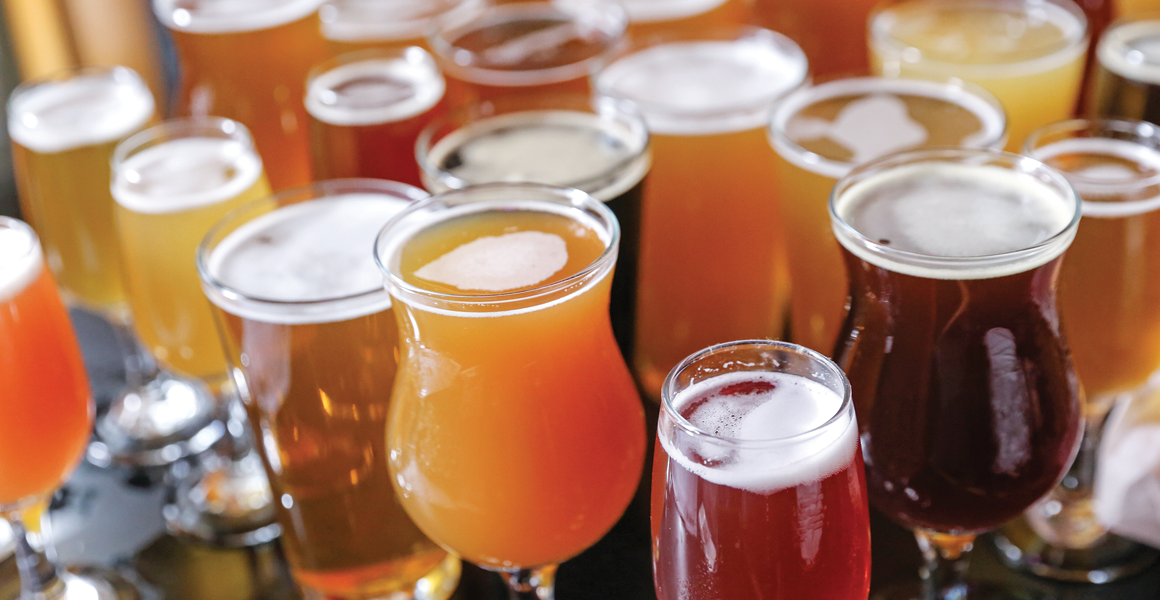Warmer weather brings with it increased alcohol sales, but by getting five key areas right now, you can keep your till ringing up to Christmas and beyond, writes Toby Hill
Tap into spirits trends
 Gin remains the on-trend spirit and presents a huge opportunity for retailers.
Gin remains the on-trend spirit and presents a huge opportunity for retailers.
James Middleton, impulse channel director at Pernod Ricard, recommends retailers stock three different types.
“Offer brands that bring in new customers, such as Beefeater Pink, those that provide a high-quality gin suitable for everyday moments, such as Beefeater Dry, and premium gins that consumers can trade up to for special occasions, such as Plymouth Gin,” he explains.
At Faisal Naseem’s off-licence in Arbroath, vodka remains the biggest seller overall because of its versatility. But Naseem agrees that sales of gin are growing most quickly. In particular, he highlights the popularity of gin liqueurs.
“Our most popular is Edinburgh Gin, which is a local breakthrough product available in various flavours,” he says. “We’ve gone through 80 cases in three months. The most popular gin flavour is rhubarb and ginger, with raspberry coming second.”
Offer premium and craft beer
While mainstream lager has taken a hit in recent years, premium world beer continues to show strong growth.
Sharon Palmer, head of trade marketing at AB InBev, says: “As consumers are increasingly drinking in moderation, they are also willing to spend a little more and treat themselves when they do drink.”
World beers, like San Miguel and Corona, are particularly popular in warmer weather. These drinks can be cross-merchandised with limes or barbecue products to drive additional sales.
Billy Kinder, owner of Today’s Gloucester Avenue in Nottingham, highlights excellent sales on lines of bottled San Miguel, Staropramen and Heineken.
Craft beer also continues to go from strength to strength. Dave Hiscutt, owner of several Londis stores in Dorset, has taken his premium beer range to a new level, offering small-batch beers from breweries such as Beaver Town, Buxton and Cloudwater.
Offer a strong core range
A sweltering summer combined with the excitement of the football World Cup has made
for fantastic lager sales, according to retailers.
“Our lager sales are very good, especially cans such as Foster’s and Stella,” says Kinder.
New entrants into the market are helping drive this growth. Bud Light launched in the UK last year and is aiming to bring the 18-to-25 market back to the core lager category.
In Scotland, minimum alcohol pricing has also had the effect of driving customers back to core range lagers.
“Craft beers tend to be stronger, so with minimum unit pricing, people feel they are paying more for smaller bottles or cans,” says Faisal Naseem. “As a result, we have seen growing sales of mainstream lager and rebalanced our stock in that direction.
“Tennants is probably our biggest-selling line, largely because it’s Scottish.”
Get the right multipack sizes
 Consumers are increasingly doing several smaller shops during the week rather than one big shop. This has had an impact on the size of multipacks they buy, says Palmer.
Consumers are increasingly doing several smaller shops during the week rather than one big shop. This has had an impact on the size of multipacks they buy, says Palmer.
“Consumers may choose smaller packs and singles, as well as mixing it up and trying new products in smaller quantities,” she says. “It’s important for retailers to stock smaller, chilled pack sizes.”
The effect of this shift is particularly felt in Scotland, where minimum alcohol pricing has eroded the savings benefits of buying larger packs.
“A lot of stronger lager brands are no longer in multipacks, and many ciders have jumped in price due to their strength,” says Naseem. However, multipacks haven’t fallen out of favour
altogether, they are just shrinking in size.
“Multipacks of Strongbow sell well as it isn’t so strong. And our bestselling product is probably 12-pack Tennants – though this has grown because people are no longer buying packs of 15 or 20,” he adds.
The rise of low ABV
Among the most noteworthy trends in the alcohol category is the rise of products that contain little or no alcohol at all.
“Alcohol-free beer is one of the fastest-growing segments in the beer category, with the sector growing by nearly a fifth in recent years and a third of UK consumers having tried it,” says AB InBev’s Sharon Palmer.
“People expect us to have low- or no-alcohol lager now,” says Dave Hiscutt. “We used to just do Beck’s Blue, but people wanted more, so now we offer Heineken 0.0 and Bud Prohibition as well.”
This trend is being driven by millennial consumers cutting alcohol and calorie consumption in pursuit of healthier lifestyles. Manufacturer AB InBev is so confident of the growth of low-alcohol beer that it has pledged that 20% of its global beer volumes will be low- or no-alcohol by 2025.
Read more: Retailers must stock low alcohol options and bitter flavour profiles
Our lager sales are very good, especially cans such as Foster’s and Stella
Billy Kinder
Nottingham

Retailer view
Dave Hiscutt
Londis Weymouth, Dorset
“Most of our ranging decisions are data-driven: we’ll look at our EPoS, see what’s selling, and allocate space accordingly. We’ve had a strong hand in craft beers for years now, and we currently work closely with small-batch breweries, such as Cloudwater, Beaver Town and Buxton.
“Craft drinkers are more promiscuous than mainstream lager drinkers. If someone prefers Foster’s, then they’ll always go for Foster’s. But craft drinkers are looking to experiment and try something new, so we keep rotating the range. I’ll look at craft beer forums on Facebook to get a sense of what people are getting into, so I can be proactive and not just take whatever suppliers suggest.”



Comments
This article doesn't have any comments yet, be the first!